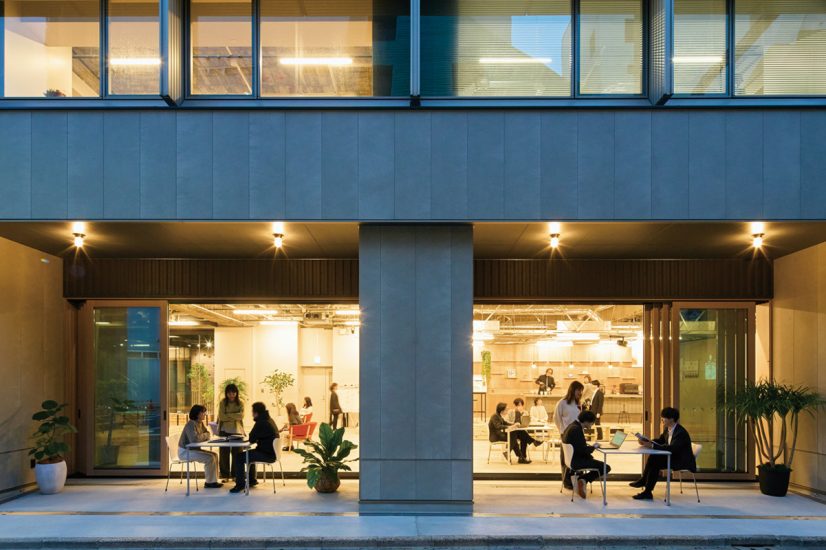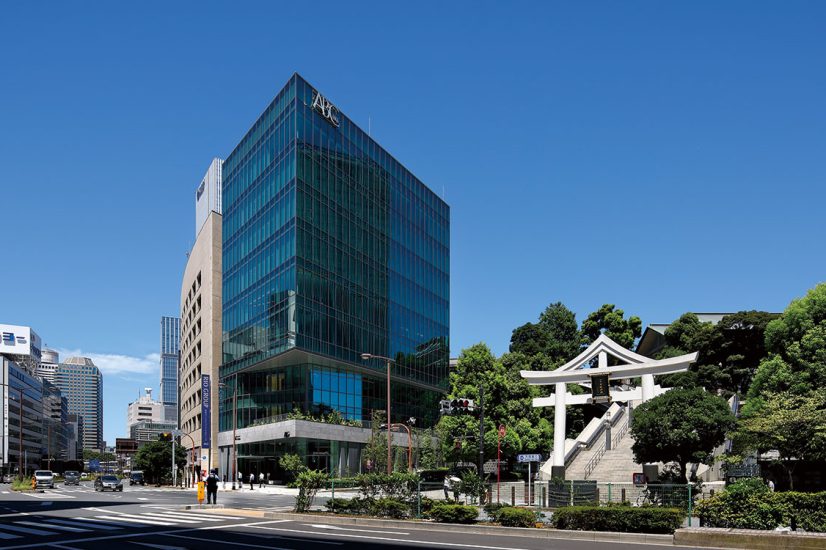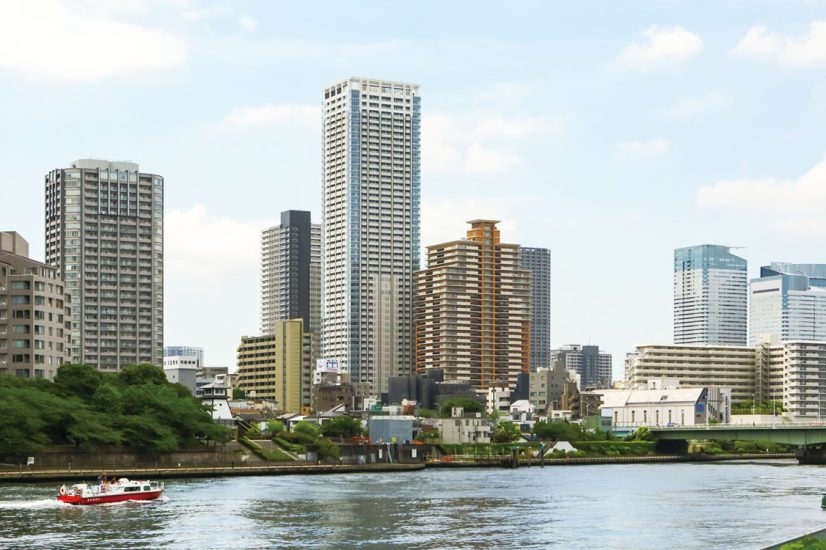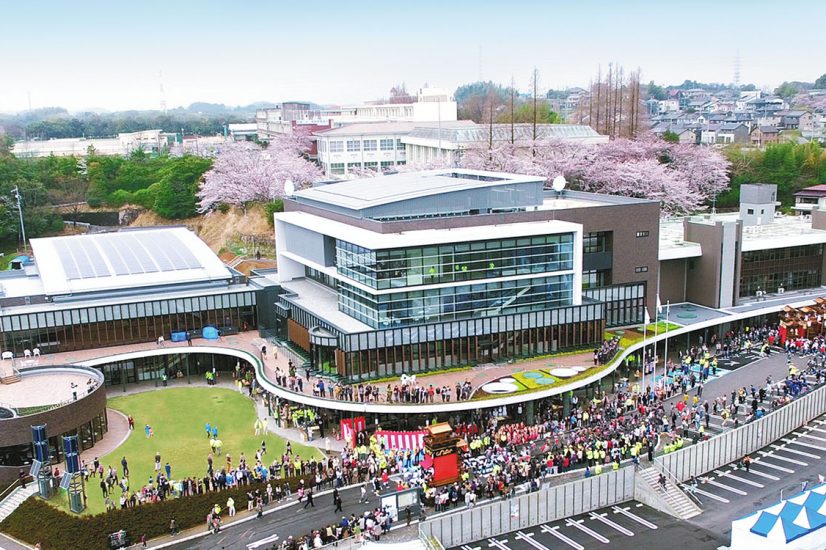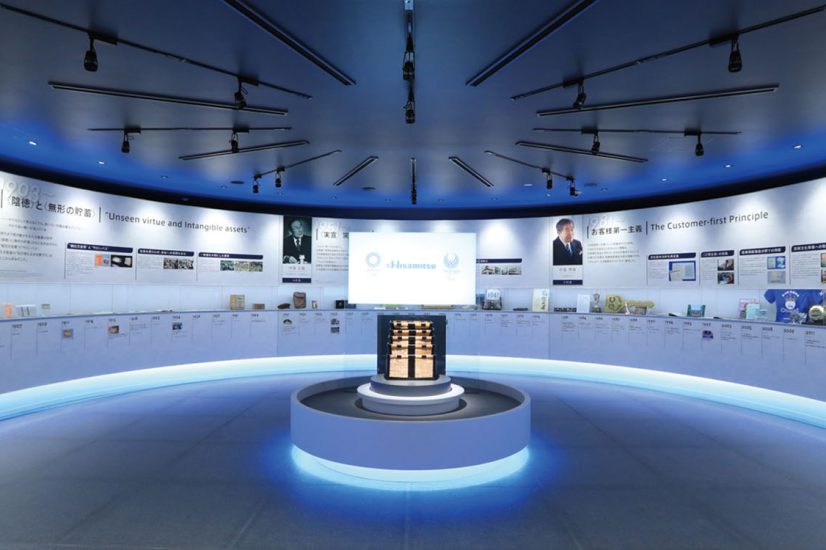Yasui Architects & Engineers, Inc.
Yasui Architects & Engineers, Inc.
A new gateway to the Port of Tokyo , built on the sea
Tokyo International Cruise Terminal
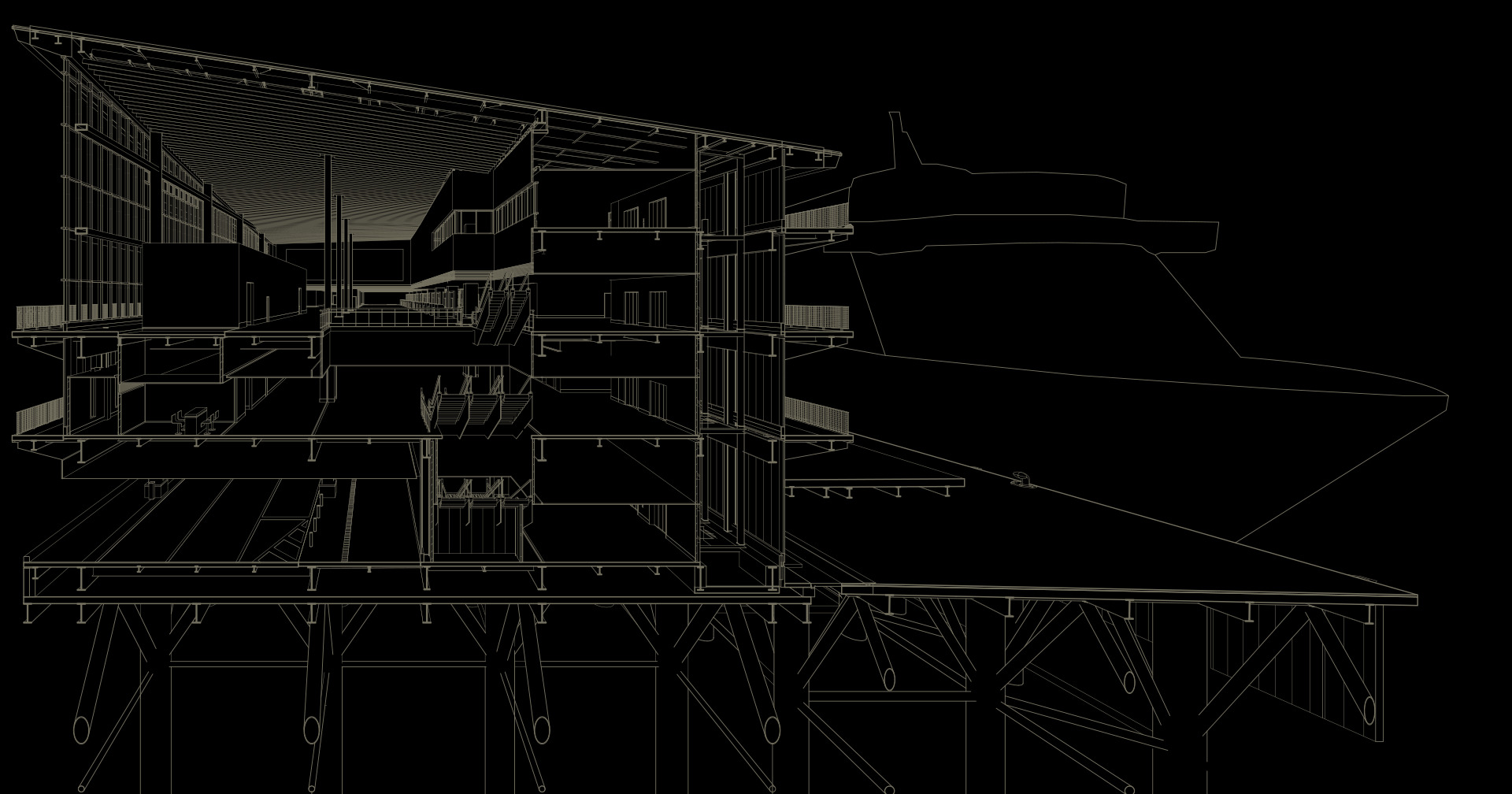
A new passenger ship terminal, where the largest ships can call at the port, embodies the imagery of people gathering under a grand roof with its gentle curve.
The Tokyo Metropolitan Government has been developing the Tokyo Waterfront City since the late 1980s. The Rainbow Bridge and Route 11 Daiba Line of the Metropolitan Expressway opened in 1993, which prompted the construction of skyscraper office buildings, hotels, high-rise condominiums, and large-scale commercial facilities. As the number of people working and living in the area continues to increase, this district proves itself as a city that continues to evolve.
Tokyo International Cruise Terminal (TICT) opened in September 2020 as a new gateway to the Port of Tokyo in the Tokyo Waterfront City. Looking at the ocean from the Yurikamome train, an enormous roof will come into sight with its gentle curve. The terminal is lit up at sundown, illuminating the night view. Visitors will see the reflection rippling on the water from a close range, or the terminal floating on water from afar.
In the recent world of passenger ships, super-large cruise ships exceeding 300 meters in length are introduced one after another. Yuta Sugiki , the design architect of TICT since 2015, was requested by the Tokyo Metropolitan Government to create a new cruise ship terminal on the outer sea so that the largest ships that cannot pass through the Rainbow Bridge could call at the port. “Because a passenger ship terminal is a facility where guests are both welcomed and seen off, we regarded one of the characteristics of this building as a place for greetings and farewells. To greet the guests respectably and offer a panorama of Tokyo through architecture, we designed a large roof that opens on both sides, to the view of ships entering the port and to the city of Tokyo, under which people would gather,” he explains.
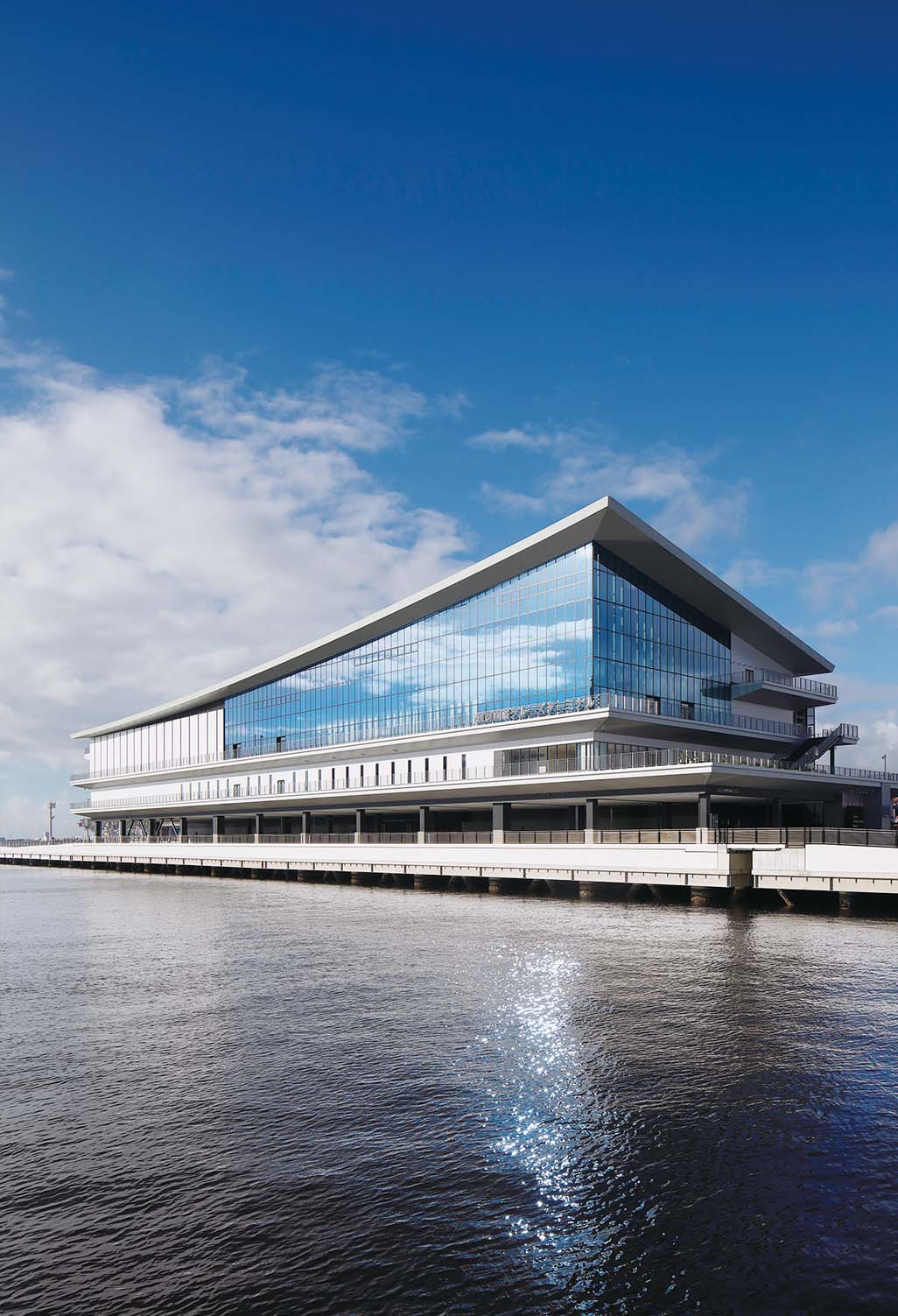
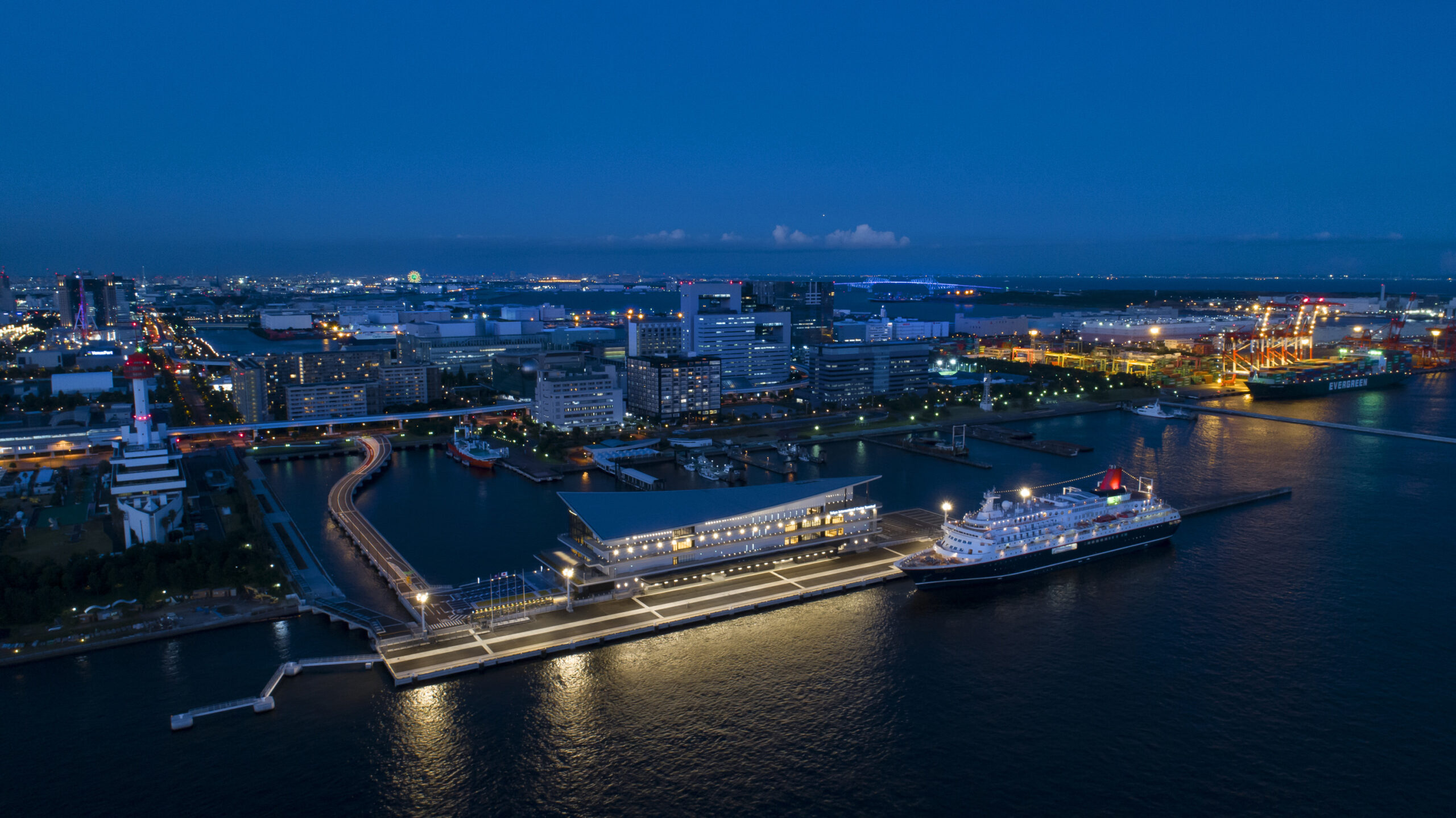
A structure specifically selected to be built on the sea integrates civil engineering and architecture.
To accurately erect architectural columns, a full-size mockup experiment was conducted.
TICT was built on the sea for super-large cruise ships that could not pass under the bridge to call at the port. The foundation is an artificial ground created using a construction method known as a jacket pier , designed by the civil engineering team. Built using a structure that integrates the technologies of civil engineering and architecture, TICT was an unprecedented project in Japan. Takuya Yasuda , the structural designer in charge, explains, “To be honest, when I first heard that the construction site was going to be on the ocean instead of land, I was unsure what to do. To build something on a jacket pier, columns are erected to support the architecture after fitting the jacket legs into the steel pipe piles and constructing an artificial ground. We spent about a year considering the connecting methods to build those columns accurately on an artificial ground built with civil work.”
The 48 architectural pillars, over 50 meters in length, were to be erected precisely at the pile locations on the artificial ground without displacement. To execute the construction work with a tolerance of a mere few millimeters’ difference, the structural designer developed a method of fitting parts called set plates (SPs) between the steel pipe piles and the architectural columns. “After adjusting the position by fitting seemingly ordinary set plates, we could finally cast concrete. As adjustment is impossible once the concrete has hardened, we had to check and ensure accuracy even after fitting the columns with precision down to the millimeter. We cast the concrete in several batches so that we could pour, check, pour again once it had hardened, and repeated the process over and over again.” To respond to such challenges, Kotaro Adachi , the structural designer who worked with Yasuda on the project, recalls how, before using the newly developed construction method, they built a full-size mockup to confirm the construction details: “Could we cast concrete into a complex shape without any gaps? To check whether it fills effectively, we experimented with using transparent acrylics to build the mockup. As a result, we were able to take efficient countermeasures, including creating air vents where gaps could potentially occur.
According to Keiichi Ito , who designed the building equipment and lighting, the technical challenges they confronted in building on the sea were not only related to the structure but also to the equipment: “The majority of the equipment was installed on the fourth floor to be able to maintain the key performance in case of an emergency, but there still were some items that had to be on the first floor. Our biggest challenge was how to procure water supply, drainage, electricity, and communication from land. The infrastructure in Higashi Yashio Greenway is buried, although it is on reclaimed land. As a solution, we installed wiring and piping to the facility by hanging them under the pier. We also had to put in a lot of effort to respond to the situation where the waves were constantly hitting the infrastructure.”
The passenger ship terminal, which started from constructing the ground itself, has many details aside from the structure and equipment that ensure super-large cruise ships to call at. “Super-large ships deliver a maximum of 5,000 or more passengers ashore. We calculated how many more buses and taxis would be used during the peak hours, and how much traffic would increase throughout the Daiba area to make adjustments and avoid disruptions.” (Sugiki)
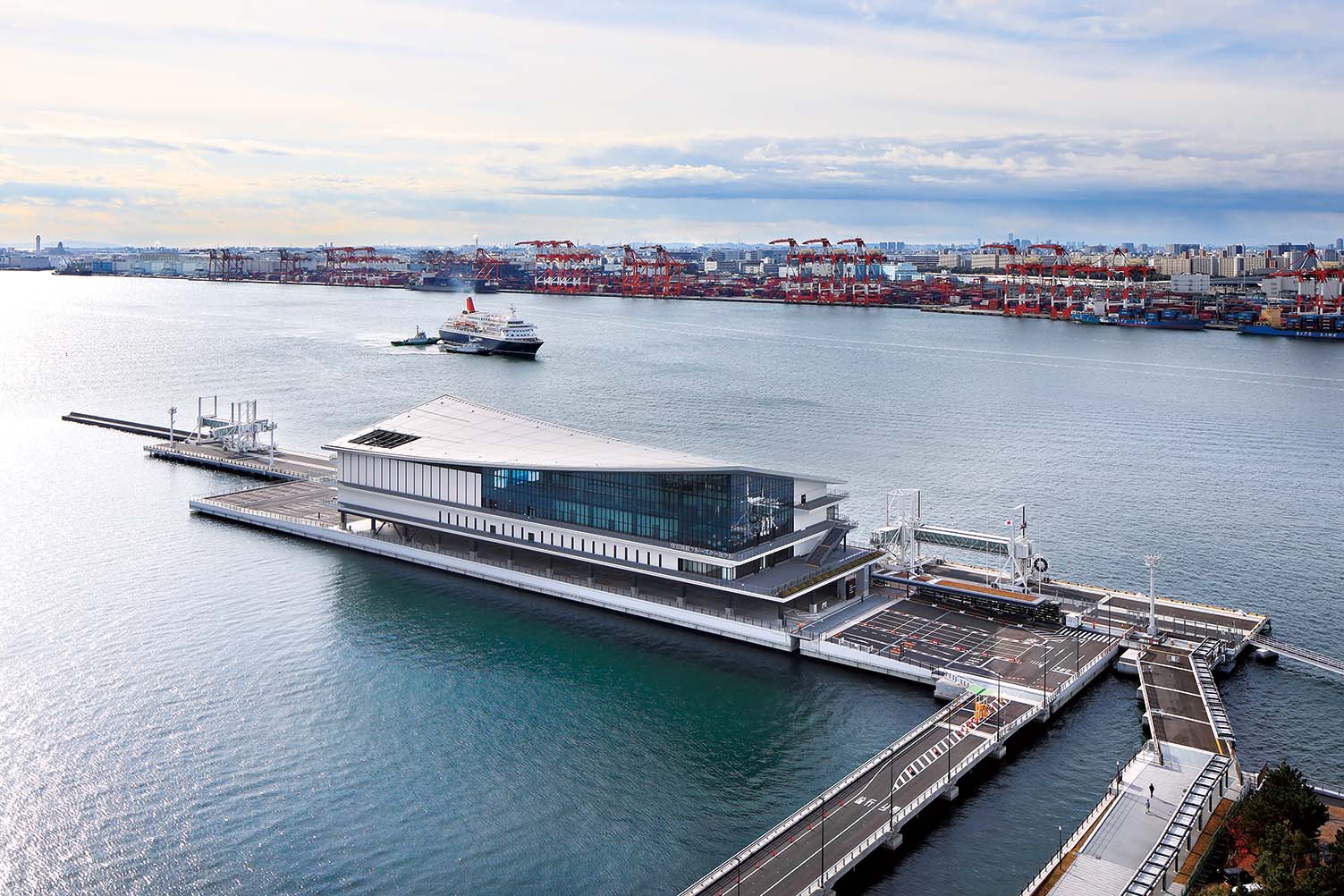
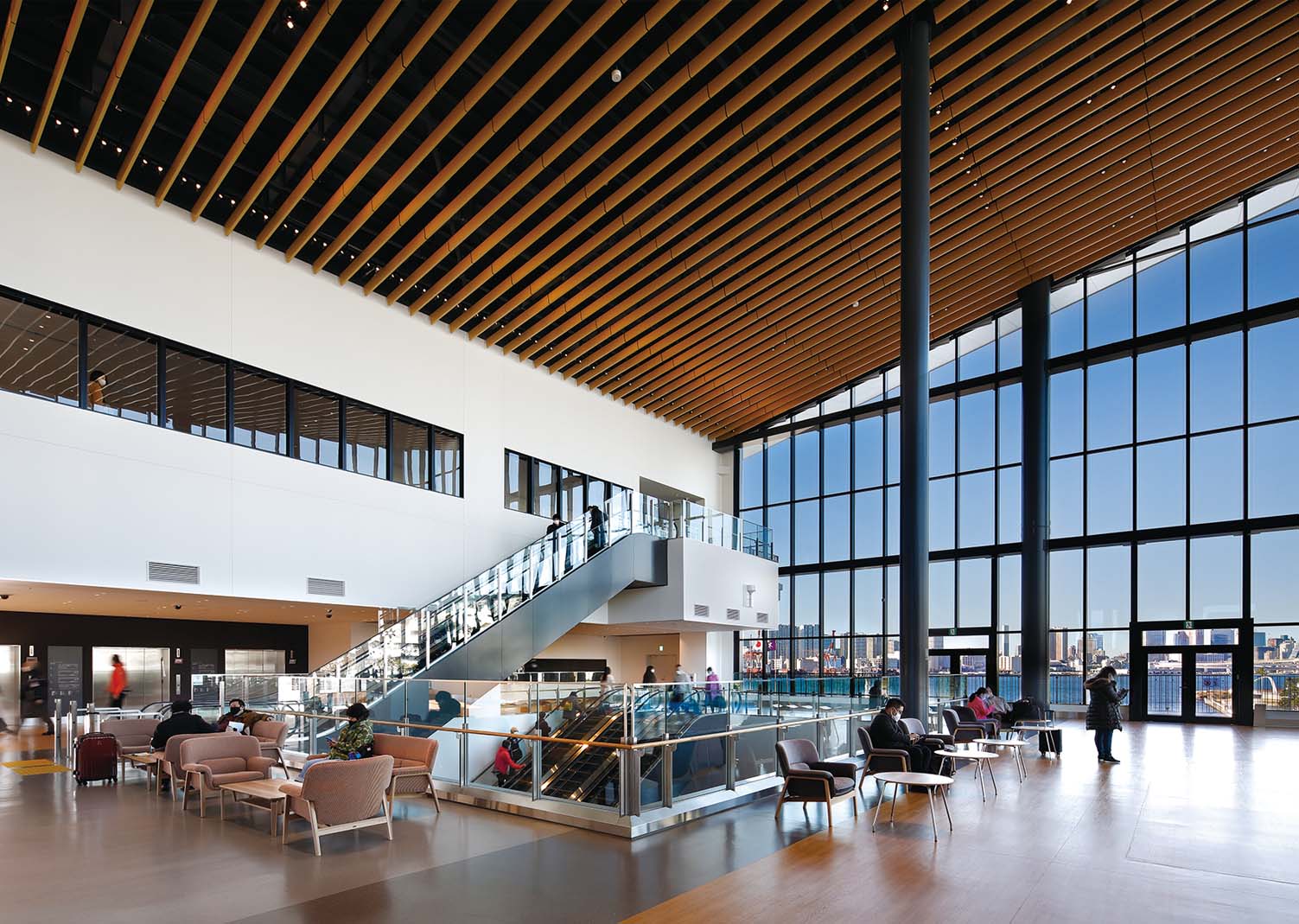
A large roof reminiscent of temples and shrines is also energy efficient.
Nighttime illumination brings out and elevates its characteristic form.
TICT adopted new technologies to overcome many unprecedented challenges deriving from its unique location on the ocean. The large roof, which “opens on both sides, to the view of ships entering the port and to the city of Tokyo” as Sugiki previously described, is reminiscent of those of temples and shrines, and thus reminds many of Japanese beauty through its gentle curve.
“We considered the form of the large roof with the structural designers. On the side that gets the afternoon sun, the amount of sunlight is controlled by keeping the ceiling low; whereas the ceiling is high on the east side, and the chimney effect allows warm air to flow along the roof to be exhausted outdoors. The form was determined by taking into account functional aspects such as energy efficiency.” (Sugiki)
“As it is difficult to compose with curved members, we developed a rule to express the warp using only straight members. By configuring the members according to the rule, I think we were able to realize the roof as we imagined.” (Adachi)
Akira Matsubara , who worked with Sugiki to design TICT with the symbolic large roof, says, “The issue was how the building would be viewed from a cruise ship or various locations in the Daiba area. In terms of form, the architecture needed to respond to its context, the ocean. As TICT is located on the sea rather than in the city, I believe it was expected to be even more in harmony with nature.”
Lighting further brings out the beauty specifically designed to match the location. “As the building has a distinctive form, the lighting was designed to highlight the shape itself. It is rare for a building to be surrounded by water in all directions, so we simulated how it is reflected on the water and how it will blend into the surrounding night view to match the color. We also switch lighting scenes depending on the time of the day to create an illusion of a building floating on water.” (Ito)
TICT was realized by a collaboration of design, structural, and equipment designers as one team. “In contrast to stations and airports that are often used for business, cruise terminals are used by those going on a trip. I was happy to design a facility dedicated to offering joy, and I would love to see countless people departing from here on a voyage with smiles on their faces,” Sugiki speaks. In the same way, the new gateway to Tokyo that was completed in the year 2020, a memorable year for anyone worldwide, looks forward to welcoming visitors from around the world.
